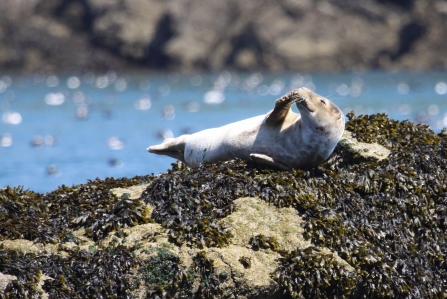For many the word ‘data’ conjures visions of lab coats or memories of maths lessons, but these humble numbers have a truly impressive story to tell. Pick any of our recent achievements and data will have played a central role by shaping our approach or supporting our arguments, and even more impressively most of it will have come to us from someone just like you.
Like many conservation organisations, we rely on citizen science to achieve the quantity and variety of data we need to protect our wildlife. Almost all of our data collection involves members of the public, many of whom don’t have expertise in the field but are instead passionate volunteers from all walks of life. As it’s designed to be accessible, citizen science allows these people to make a real difference without the need for specialist knowledge, skills, or equipment.
When it comes to our marine wildlife, we use citizen science in many different ways. We gather seagrass bed and marine mammal sightings, monitor species on our beaches through intertidal surveys, and record underwater finds through the national dive initiative Seasearch. We then submit what we’ve gathered to various organisations and databases, like Natural England and Marine Recorder. Sharing our data like this is very important, as it gives everyone from researchers to policy officials a more complete picture of our current marine situation.


